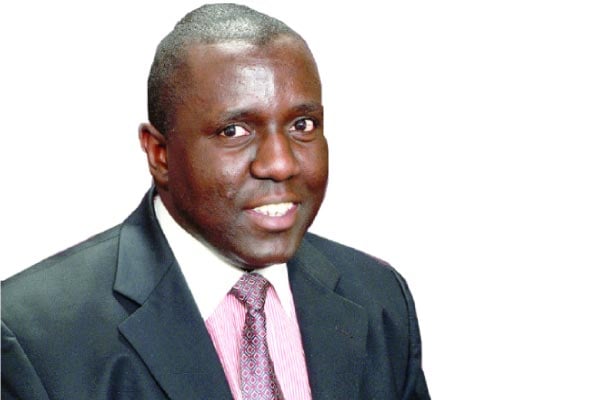Prime
Father of the city, architect Henry Ssentoogo

Author: Karoli Ssemogerere. PHOTO/FILE
What you need to know:
Mr Sentoogo in his career distinguished himself as a big ideas architect whose impact on the city’s skyline will be felt for a long time.
Henry Ssentoogo, one of the first professionals to qualify as an architect, breathed his last on Monday at his home in Lubowa. Mr Sentoogo in his career distinguished himself as a big ideas architect whose impact on the city’s skyline will be felt for a long time.
Recent works include Statistics House, as if to challenge the parent Ministry of Finance housed in more modest quarters on Sir Apollo Kaggwa Road. Down the street was the overhaul of Christ the King, first constructed by the Goan Community in the 1920s at the centre of Kampala. Across the street, at KCC where he worked as the city architect until his retirement in 1973 before establishing his practice at UCB Towers, Mr Sentoogo came of age, at a time of profound change to Kampala’s skyline.
It is interesting that Kampala’s skyline went through two distinct phases, the run-up and aftermath of independence where structures like City Hall, Parliament, Mulago came up. Then the burst of energy, ironically Idi Amin brought to the heart of the city, completing Uganda House, erecting Communications House, which was only completed in the Museveni years. Amin’s centerpiece was the Nile Mansions and Conference Centre, which cut the Kampala Park into two. Apollo Hotel, now Sheraton Kampala Hotel, retained one part of the park, and the Nile Mansions took over the second part. A subway was constructed to give city residents a feel of the greenery that is now escaping Kampala. In 2011, the first City Executive Director Jennifer Musisi, embarked on a futile exercise to fully open the remainder of the park to the public.
In modern Kampala, Ssentoogo has been associated with the construction of the new parliamentary chamber. One of whose attributes was to create a circular plenary room to move away from the in-your-face, Westminster style parliament. In any case, the head of government, brought to account during prime minister’s questions does not sit in Parliament. Further uptown, he has been associated with NSSF’s pension towers in Nakasero, the tallest projected building in Kampala with 33 stories.
In Entebbe, he redesigned State House. In one briefing at the Ministry of Works, former PS Charles Muganzi told us that something went wrong with a delicate part of the works at State House. It was with the front doors. One door kept losing its gloss, attracting the attention of the PS, who by law is the project manager, the contractor and the architect Sentoogo. Dutifully, each time the President was out of town, the “mischievous” door was removed, re-varnished and put back. But it always lost its gloss before the next visit. The PS was afraid for his job. Then one day, the miracle was resolved. I forget the exact details of the how, but Ssentoogo and others sat and observed the door the entire day, and realised between 12 noon and 3 pm, the mischievous door was in the direct sunlight gaze. The President also aware of the ongoings at State House, chimed in. With Sentoogo, he knew, corruption was not the problem, it was something else. PS Muganzi was relieved that the puzzle was resolved.
Many historical buildings end up staining their doors, into unsightly colours, like the black stain at Lubaga Cathedral on doors donated by the late James Mulwana.
Ssentoogo rose from humble beginnings in the lost counties like many others. At St Mary’s College Kisubi, he sat in the commercial section that was intended to produce colonial clerks before his mentor discovered him and encouraged him to study architecture. One of the biggest pressures at independence was to formalise qualifications issued in Uganda. There was the track of the cream of the elite who studied abroad and were awarded degrees, then there was the track also elite who sat for the University of London examinations and were awarded degrees of the same university while attending Makerere. To pass these intermediate exams, you had to attend a few select schools like Budo, Gayaza or Makerere College. The vast majority in the University of East Africa were awarded certificates, diplomas and licentiates. Ironically, it was leaders like Ben Kiwanuka and William Senteza Kajubi during DP’s short tenure in power who called the colonialists on this one, setting off the historic airlift of 300 Ugandans who attended university in the United States when Uganda won self-government in 1962. May his soul rest in eternal peace.
Mr Ssemogerere is an Attorney-At-Law and an Advocate. [email protected]



